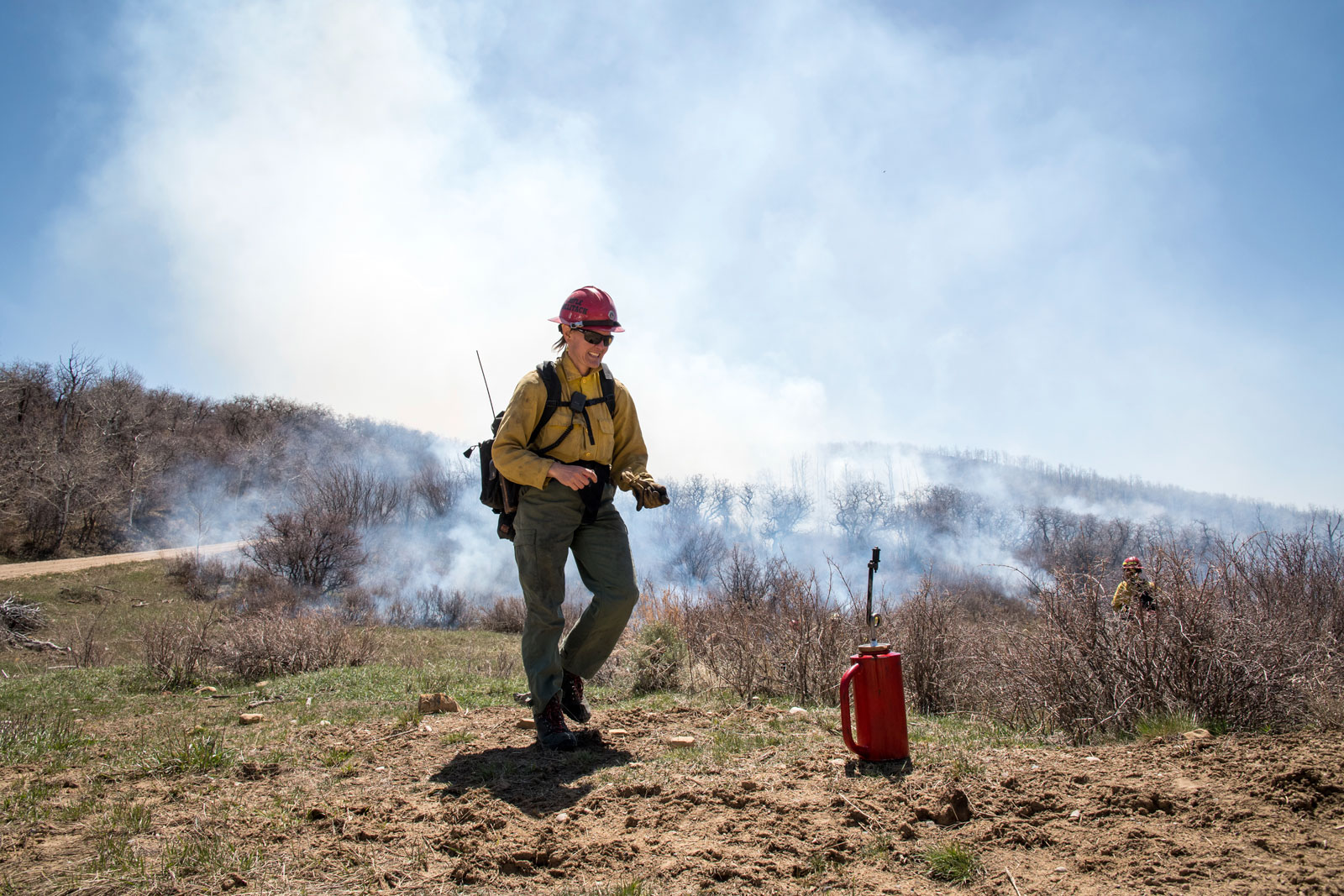The Local newsletter is your free, daily guide to life in Colorado. For locals, by locals.
Take one glance toward the mountains and you’ll notice things are looking green. In fact, last month the U.S. Department of Agriculture announced welcomed news: Colorado is officially drought free for the first time since 2017. Though experts say the Centennial State has experienced abnormally dry conditions dating back nearly two decades, this past winter brought historically deep snowpack to the mountains, followed by a spring that delivered consistent rain. Heading into summer, Colorado is lush and wet—which means the 2019 fire season might be less severe than last year, when devastating blazes torched more than 450,000 acres throughout the state.
With a diminished threat of catastrophic fire, one might assume the time is ripe for forest managers to implement prescribed burning, a practice that is woefully underutilized in Colorado. However, experts point out that the process isn’t as simple as taking flame to the forest. Prescribed burns take months, sometimes years, to plan. And wet weather isn’t always a good thing. If the forests and grasslands are too damp or snow-covered, it can make burning even more difficult.

“I don’t know if the spring weather has been entirely helpful for the prescribed fire cause in Colorado,” says Gabe Donaldson, fire program manager for the Colorado chapter of the Nature Conservancy (TNC). “You’d think we’d be trying to do more prescribed fire when this opportunity comes up with a wet spring, but there are other issues we’re contending with.”
Donaldson explains that forest managers are looking for a “sweet spot” for burning—times of the year when forest and grasslands are neither too dry nor too wet. If a fire is lit on land with high soil moisture and green vegetation, it might not carry across the landscape as intended and could produce more smoke, which is a concern for nearby population centers. Donaldson says he’s not expecting the fire season to be as intense as 2018, and he hopes TNC crews will be able to burn between 5,000 and 8,000 acres in Colorado this year on private and public land, which is on par with what the organization accomplished a year ago.
However, some forest managers in Colorado see an opportunity to increase burning this year. Kevin Grant, deputy state fire management officer for the Bureau of Land Management (BLM) in Colorado, echoes many of Donaldson’s comments about the challenges of burning when it’s wet, but says his teams have already made good progress this year. “I don’t know that our strategy has changed,” Grant says, “But we’ve had more opportunities to burn this spring.”
According to Grant, BLM crews burned about 800 acres in Colorado in May 2019, whereas land was so dry in May 2018 that his teams weren’t able to put down any prescribed fire. Kate Miyamoto, BLM public affairs specialist, says the agency—which manages 8.3 million acres of federal land in Colorado—plans to burn approximately 5,800 acres across the state this year. According to 5280 research, that would more than double the amount of burning the BLM accomplished in the previous season. The U.S. Forest Service (USFS), which annually conducts the most prescribed burning, did not have readily accessible data for how many acres they’d burn in 2019, though 5280 estimated it burned about 18,000 acres in Colorado each year over the past decade.
At the state level, the Division of Fire Prevention and Control burns only about 300 to 600 acres annually. According to Kirk Will, the unit chief for the Prescribed Fire and Fuels Program, the wet weather this spring has not made for much of a difference. “We’ve burned more this year compared to last year, but less compared to some other years,” he wrote in an email. He noted that this was due to wet conditions and snow found in some burn units this year. “The fuels were covered in snow and rain, which made them nonburnable in some areas,” he wrote.
Despite the challenges posed by wet land, some experts like Jeremy Bailey, who directs prescribed fire training throughout the country for TNC, want to see forest managers seize an opportunity to burn as much land as possible. “In years like this,” he says, “If [forest managers] are nimble enough, they can increase their burning volume.”
Bailey is skeptical that landscapes will be too wet to ignite controlled burns this season. He notes that in New Mexico, which has similar soil moisture to Colorado, his teams have been able to conduct successful burns. “[This weather] allowed us to be a lot more successful with a lot less risk,” he says. “We’re able to burn the understory of the woods, but the fire is not extending through the grass. It creates a really nice safety backstop.” Because of this dynamic, Bailey—who is going to be managing teams primarily in Arizona and New Mexico this summer—hopes they will be able to double their expected burning accomplishments this season, and would like to see similar results in Colorado.
“There are going to be some great opportunities for burning and for managed wildfire,” he says. “We should be demanding land managers get good fire on the ground.”
The amount of fire Colorado will see this year—prescribed or otherwise—depends on various factors: Each ecosystem has unique challenges, and the summer weather is unpredictable. But the experts we spoke with all agree on one thing: more prescribed fire is necessary.
“I’m dreaming of a world,” Donaldson says, “where prescribed fire is treated with the same urgency as wildfire.”








